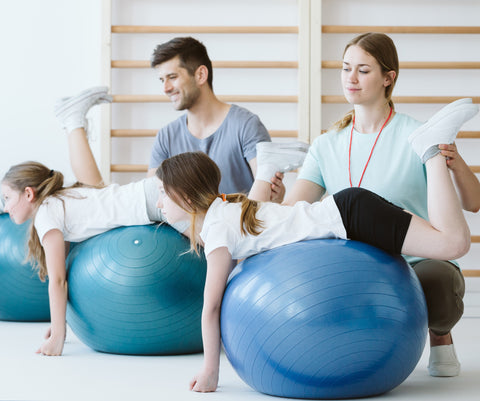Movement and Sensory Breaks are being talked about a lot these days as they can be so beneficial for children and for the school environment. If you haven't completed any training in the area, I would recommend looking at my CPD Plans for schools as there is a huge amount of CPD available for a very affordable price.
To assist with my client's occupational therapy (OT) goals I regularly visit schools to ensure their OT needs are being met in the school environment. The response and level of knowledge can vary amongst school teams but the majority of educators are keen to learn and proactive about recommendations. It is important to note the complexity of needs in a classroom in recent times and the growing number of students that teachers are required to support without appropriate therapeutic supports & interventions. A teachers role is more focused around education & therefore it is vital to have an OT involved that is trained in sensory integration to support your child's individual sensory needs within the school environment.

It can be helpful to see movement & sensory breaks as two separate entities yet they are often used interchangeable. In my opinion, movement breaks can often be achieved within the classroom and they can be inclusive as all children benefit from movement to assist their attention & focus. Some kids will require more movement breaks than others as they may frequently use the bathroom for a break, they might be constantly fidgeting or tuning out etc.
Children who have been identified as having difficulties processing sensory information, may need additional ways of gaining sensory input to feel regulated within certain environments. Specific individualised recommendations around these strategies can be provided by the child's OT. Some may include strategies within the classroom such as, a sensory cushion on their chair, schedule of jobs that include lifting/pushing/pulling, TheraBand wrapped around the legs of the chair, fidget toy box etc.
Other recommendations may include specific 'sensory breaks'.

Sensory breaks are normally part of a 'sensory diet' where activities are prescribed by an OT for a child based on that child's sensory preferences for both home & school.The focus of these 'sensory breaks' is to offer intensive sensory input for 15mins or longer in order to support a child's ability to self-regulate in the classroom.
Sometimes, the benefit of these breaks isn't always apparent during school but they can make a huge difference to that child at home in the evening when they have to do homework, self care demands and bedtime routines. If the child has access to a Special Needs Assistant (SNA) this break should be done at recommended times everyday so that the child is aware when they will be accessing this break & times have been chosen to suit that child's sensory system.
This break might include lots of activities that provide proprioceptive input as this sensory input is thought to be well tolerated by our nervous system - think Pushing, Pulling, Stretching & Heavy Work.
You might find the following activities recommended for a child who requires proprioceptive input:
Climbing or Hanging from Monkey Bars, Yoga, Resistive Band Exercises, Pushing Furniture, Pulling a Wagon, Wheelbarrow Walks, Trampoline, Cycling, Animal Walks, Skipping, Marching, Digging in the Garden/ Sandbox, Therapy Ball Exercises, Resistive Chewy Foods in Lunch, Gymnastics, Wrestling, Bear-Hugs, Swimming, Weighted Backpack for Walks, Army Crawling while pushing a weighted ball etc.
Vertical vestibular input (bouncing & jumping) is seen as the most accepted form of vestibular input for kids especially if you are working with a child who hasn't seen an OT. Spinning should be restricted unless specifically recommended by an OT. You always want to observe how a child responds to any sensory input so you can adapt appropriately.
How can vestibular input be integrated into a child's day?
Trampoline, scooter board, linear swinging, dancing, sitting on a therapy ball, yoga, rolling, gymnastics, slides etc.
However, the environment and activities recommended are dependent on a child. Let's think about a child who has a low threshold for auditory input, their sensory break might include time spent in a quiet environment doing a puzzle or chilling on a beanbag while looking at a lava lamp. Every child’s sensory system is different and their programme should reflect the needs of their age, the environment and their state of arousal.
*Helpful strategy - start and finish your sensory breaks with deep breathing exercises - very important for regulation!
Do I expect a teacher to understand every child’s sensory system? Not at all, even an OT needs further training in Sensory Integration to practice these techniques. I would advocate for OT involvement in every child’s Individual Education Plan (IEP) when necessary with prescriptive recommendations around the child’s sensory needs which are demonstrated appropriately to the school staff.